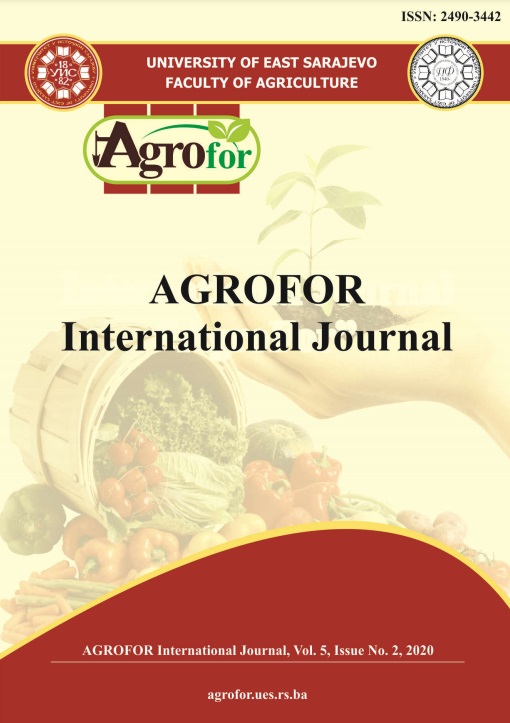DETECTION OF SELECTION SIGNALS IN CATTLE POPULATIONS BY PCA
DOI:
https://doi.org/10.7251/AGRENG2002090OAbstract
The presented study provides a genome-wide scan of selection signals in cattle by
principal component analysis (PCA). The aim was to identify SNP affected by
intensive selection based on package PCAdapt implemented under software R. This
analysis provided insight into the association between the SNP frequencies related
to population differentiation. The four cattle populations were involved in the
analysis (Slovak Spotted cattle, Ayrshire, Swiss Simmental and Holstein) with
overall 272 of genotyped individuals. After applying quality control, the final
dataset consisted of 35 675 SNPs, with an overall length of 2496.14 Mb and
average space between adjacent SNP 70.03 ± 76.1 kb. After performing PCA
analysis, the uniqueness of the breeds was revealed. On the other hand, a close
genetic relationship and eleven SNPs affected by selection were found, with a
position close to 162 genes involved in the various biological processes. The
majority of genes were involved in the positive regulation of adenylate cyclase
activity, embryo development and somatic diversification of immune receptors via
somatic mutation. Several candidate genes for genetic control of the immune
system (DNAJB9), muscle development (SEPT7, TRIM32, ROCK1, NRAP,
PZDZ8, HSPA12A and FGFR2), milk production (SOCS5, CD46), reproduction
(LHCGR, EEPD1, FSHR) and coat colour (KIT) were identified. Our results
provide insights into the regions of the genome affected by the intensive selection
of analysed cattle populations.

